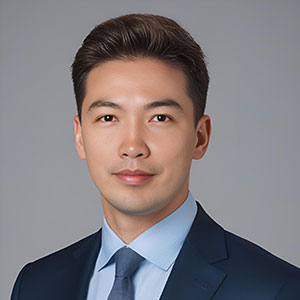How Geogrid Weft Insertion Machines Solve Uneven Mesh Issues
Uneven mesh is one of the biggest headaches in geogrid production. A Geogrid Weft Insertion Machine can change that completely. It brings precision, balance, and stability to every yarn movement. But how does it actually fix mesh distortion and tension problems? In this article, Grand Star Technology reveals the hidden mechanics behind perfect mesh alignment – and why leading manufacturers are switching to smarter weaving solutions.

The Real Causes Of Uneven Mesh – And How We Fix Them
Uneven mesh shows up as crooked apertures, variable tensile strength, and costly rework. The root causes are usually simple: unstable yarn tension, inconsistent take-up, and guide-bar drift during patterning. Our Geogrid Weft Insertion Machine tackles each of these failure points with stable mechanics and closed-loop electronics.
First, tension. Four free-standing warp beam positions (flange diameter 812 mm x 32”) feed yarns with an electronically controlled let-off. Each beam has its own drive, so the machine reacts to micro-changes in load rather than averaging them. This stops tension spikes that create skinny or stretched mesh cells.
Second, take-up. An electronically regulated fabric take-up with a low-friction drive and servomotor – managed by Motion Control – keeps pick spacing steady across the web. This is where many lines drift over long runs. By holding take-up speed constant even as roll diameter changes, aperture size stays consistent from first meter to last.
Third, pattern integrity. Our electronics guide bar drive (EL) keeps guide-bar movement precise under dynamic loads. When paired with GB1 – GB4 stitch-forming and up to 2/3/4/6/8 ground guide bars (or 2 pattern bars + 4 ground guide bars), the machine maintains clean, repeatable geometry, so the grid you program is the grid you get.

- Result: Straighter apertures, tighter dimensional control, and fewer off-spec rolls.
✅ Why It Matters On Your Floor
- More consistent tensile performance across roll width
- Less trimming and scrap at quality control
- Fewer stops for yarn breaks and rethreading
- A smoother path to certification and buyer audits
Designed For Stability, Shift After Shift
Uniform mesh quality depends on a stable platform. The Grand Star Technology Geogrid Weft Insertion Machine starts with Raschel-style knitting architecture (2 – 8 bars), matched to geogrid needs where stiffness and alignment are non-negotiable. Choose gauges E6, E8, E12, E18 to fit aperture targets, and working widths 181″, 188″, 220″, 230″, 275″ to match your line plan. We combine a single-bar bar, knockover-cum-comb bar, slider bar, and stitch comb bar to manage loop formation and knock-over cleanly – key for steady apertures at high speed.
Our GrandStar® Command System lets operators set, program, and modify the machine’s electronic characteristics in plain language. Change yarn let-off curves, tweak take-up ratios, or switch patterns between orders without a full stop. A speed-regulated main drive keeps mechanical load and RPM synchronized; an Integrated Laserstop system adds a second layer of protection when yarn breaks or fabric faults are detected, reducing the length of any defect.
Power and environment also affect mesh quality. The machine’s total connected load is 25 kVA, with 380 V ±10% three-phase compatibility. Recommended conditions are 25 ℃ ±6 ℃ and 65% ±10% humidity, with floor pressure between 2000 – 4000 kg/㎡ to keep the frame stable. An oil/water heat exchanger helps maintain thermal balance so viscosity and drive response stay predictable during long runs.
From the first hour to the final roll, these elements work together to remove the tiny variations that grow into uneven mesh:
- Electronic yarn let-off (per warp beam)
- Motion-controlled fabric take-up with servomotor
- EL guide-bar drive for pattern accuracy
- Laser-based stop and monitoring for fast fault isolation
✅ Typical Wins You Can Expect
- Aperture tolerance held tighter across full width
- Noticeable drop in warp/weft tension alarms
- Shorter stabilization time after restart or doff
- Better roll-to-roll repeatability for downstream coating or lamination
From Start-Up To Scale: Service, Training, And A Simple ROI
Solving uneven mesh is not only a question of hardware; it’s also about getting teams confident and lines stabilized quickly. Grand Star Technology supports you with installation and training across 20+ countries, plus local teams in Turkey, India, Vietnam, Indonesia, and the USA. We combine on-site sessions with videos, manuals, and online guidance, so new operators reach steady output faster and veterans can fine-tune for premium orders. Regular inspections by our field engineers keep the machine aligned, software updated, and settings optimized for your yarn mix.
Not every task needs a bullet point – but a few numbers matter when planning ROI:
- Fewer defects per roll → lower scrap and rework
- Shorter changeovers via GrandStar® Command System → more saleable hours
- Stable power and motion control → consistent quality for customer audits
- Local service presence → reduced downtime and faster corrective action

- Where It Fits In Your Product Mix
If you produce geogrids for soil stabilization, base reinforcement, or retaining wall systems, you already know that uniform apertures translate into predictable interlock and pullout. A Geogrid Weft Insertion Machine with the controls above helps you meet those specs with less drama – especially on wide widths and heavier picks where tension drift is common.
Closing Words
Ready to eliminate uneven mesh and raise your first-pass yield? Talk to Grand Star Technology about our Geogrid Weft Insertion Machine. We’ll review your yarn specs, target aperture, width, and throughput, then propose a settings package and training plan tailored to your floor. Book a technical consult today and turn uneven mesh into a solved problem on your next production run.

Hey, I’m Vincent!
Solving complex challenges with precision and creativity in the warp knitting industry. Passionate about advancing textile engineering and turning innovative ideas into reality. Shaping the future of warp knitting.

